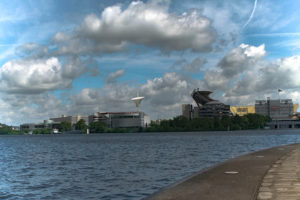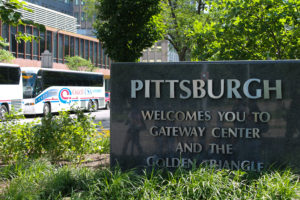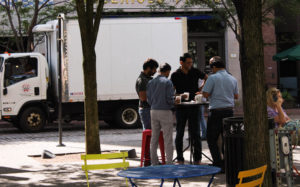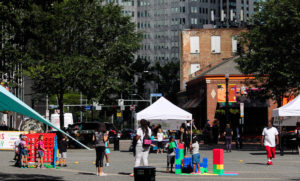by: Amelia Smerbeck
“Not we can, we have to,” says Jayme Kerr, coordinator of Point Park University’s Center for Inclusion Excellence, about taking action on Pittsburgh’s diversity issues-and everywhere for that matter.
Many wonder about what is meant by “issues,” while others are very well aware and eager to eliminate them. Pittsburgh has come a long way, but people always have something to say. Stereotypes are often forced upon those who are considered “diverse,” says Alex Grubbs, who grew up in the outskirts of Pittsburgh as a victim of those stereotypes.

Photo by: Amelia Smerbeck
This is not only seen in neighborhoods while growing up but in academia and the workplace as well. Private academies, colleges, and businesses often have a diversity “quota” that is aimed for. But in some places, it is just a policy to make the company look good. Point Park University has a fairly diverse campus and requires its staff to be 60% as diverse as the student body, according to Jayme Kerr.
Unfortunately, not every school has policies like that, let alone businesses. Lower diversity is often seen in the workplace, mostly with gender. The use of networking also plays an important role in the unfairness of employment. As Kerr states, “[employment] seems to be less about qualifications and more about who you know,” meaning one person could have multiple degrees for an occupation, while another could know someone higher up in the company and get hired over the qualified person. This could also happen to students applying to colleges or academies.

Photo by: Amelia Smerbeck
“Interpretive horizons” are something else she spoke about. Dominance is always observed in both jobs and education, and minorities are constantly trying to break through. This further damages the image that privileged people cast on diversified groups that continue to limit the city from reaching its full potential as a city welcome to all.
Focusing on Pittsburgh as a whole, it is not as diverse as it may seem. According to a 2017 data chart from datausa.io, the city’s population is over 60% white, and all ethnicities that aren’t African American are each less than 10% of the population.

Photo by: Amelia Smerbeck
The history of a place has a major impact on diversity as well. But as they say, the past is in the past. So when views on diverse persons from Pittsburgh’s ancient history comes into play, it is very unfair to those targeted. Kerr says that we are “functioning with an outdated model,” meaning that we need to adjust to today’s society and be more accepting of those different from us. After all, we all share the city.
As stated earlier, change is anticipated. But you can’t force people to change; we have to educate people instead of them basing their judgment off a prejudice or previous judgment, says Grubbs. From there, they can process the information in order to help our city to truly welcome everyone.
On the upside, Pittsburgh has, as a matter of fact, changed for the better. Students influencing others from different sides- low income on high income, female on male, etc.- increases awareness and acceptance of differences throughout the city. This occurs in the workplace as well, and with adoption and enforcement of policies, Pittsburgh can continue to take steps toward welcoming everyone with open arms.

Photo by: Amelia Smerbeck
So to answer the question at hand… not quite. Pittsburgh has taken big steps but is not as welcoming to diversity as it is at first glance. It is important to recognize that diversity is not only an equal mix of differences but also how it is accepted and appreciated.
“Pittsburgh, PA.” Data USA, 2017, datausa.io/profile/geo/pittsburgh-pa/#demographics.